Food...and other things
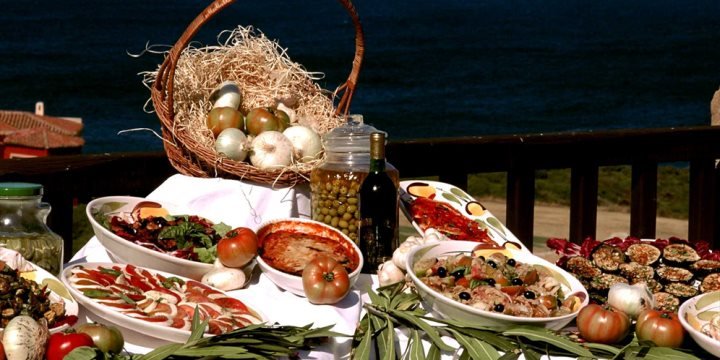
Eating, in Sardinia, means family, tradition and plates of typical Sardinian cuisine, much like in the rest of central and southern Italy, a reason to pass time with your dear ones, to laugh and tell the last news, sometimes even an occasion to discuss and argue in pure Italian style. Families usually gather at the grandparents’ houses on Sunday, around noon, and start with a feast lasting at least four hours, with mixed appetizers, first and second courses, side dishes, vegetables, cheese, cakes and coffee. During lunch, you can’t go without a local Sardinian wine and to finish a good myrtle, limoncello o fil’e ferru… for digestion, of course.
Tradition
Typical Sardinian cuisine tradition boasts very ancient roots, at first agro-pastoral, that slowly expanded acquiring in time also recipes based on fish and other seafood, typical of fishermen. In fact, Sardinia, in ancient times, was inhabited mainly in the woods of the inland, while coasts, partly for punic/phoenician invasion, partly for the less than savory air, were almost desert. Shepherds, during the long periods when they were herding their stocks, needed simple and nourishing food (accompanied with some house wine), easy to carry and resistant to both high and low temperatures. For this reason Sardinia has such a wide selection of preserved meats and cheese both tasty and aged, but more than anything it should be mentioned the bread “carasu”, delicious wafers of thin light bread, very easy to carry.
Pane Carasau
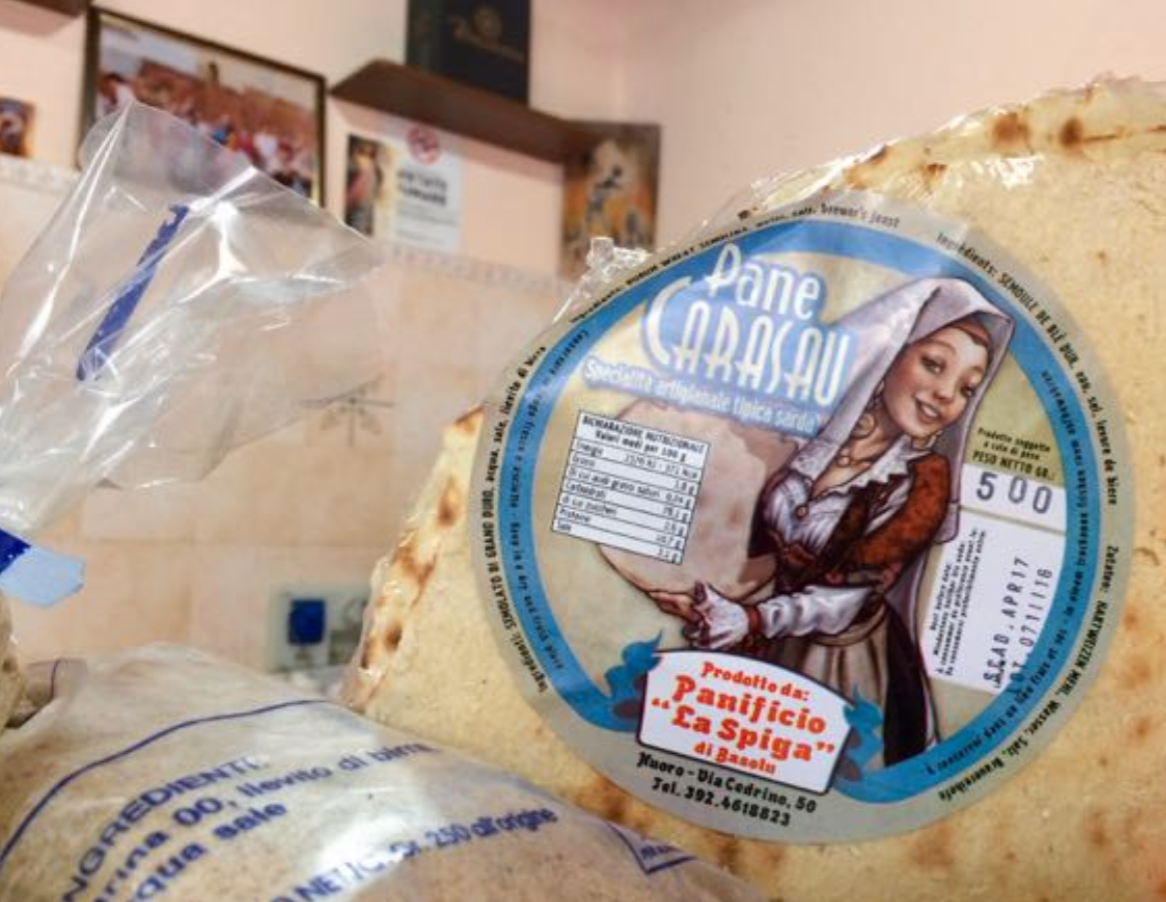
There wasn’t a lunch or dinner in Sardinia that didn’t start with a basket of pane carasau (translation: music paper bread). Unlike any other bread I’ve tasted in Italy, this specifically Sardinian food is closer to a poppadom or crispy taco than bread – which isn’t a bad thing – especially when you’re staring down the end of your fork at four hearty courses.
You can also find Pane Guttiau, which is more heavily salted and includes oregano. My indulged pallet preferred this saltier version.
Pecorino
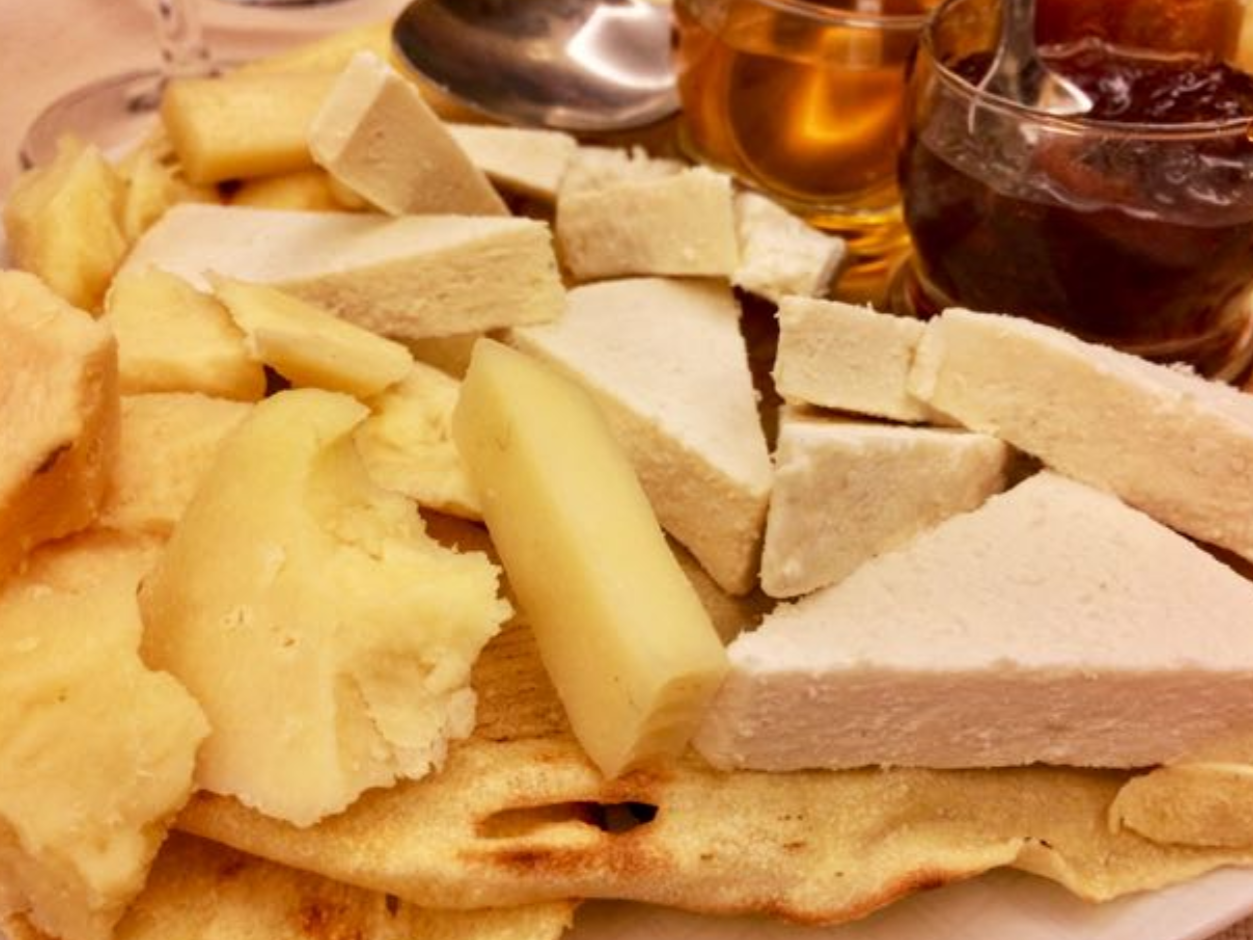
If you’re a cheese lover, you’ll probably have tasted pecorino cheese before, but did you know that most of it is produced in Sardinia? It’s also one of Italy’s oldest cheeses. Expect this cheese to show up time and time again in Sardina: in its pure form, in ravioli, over pasta and even in dessert. Yep, you heard me right.
Fiore Sardo
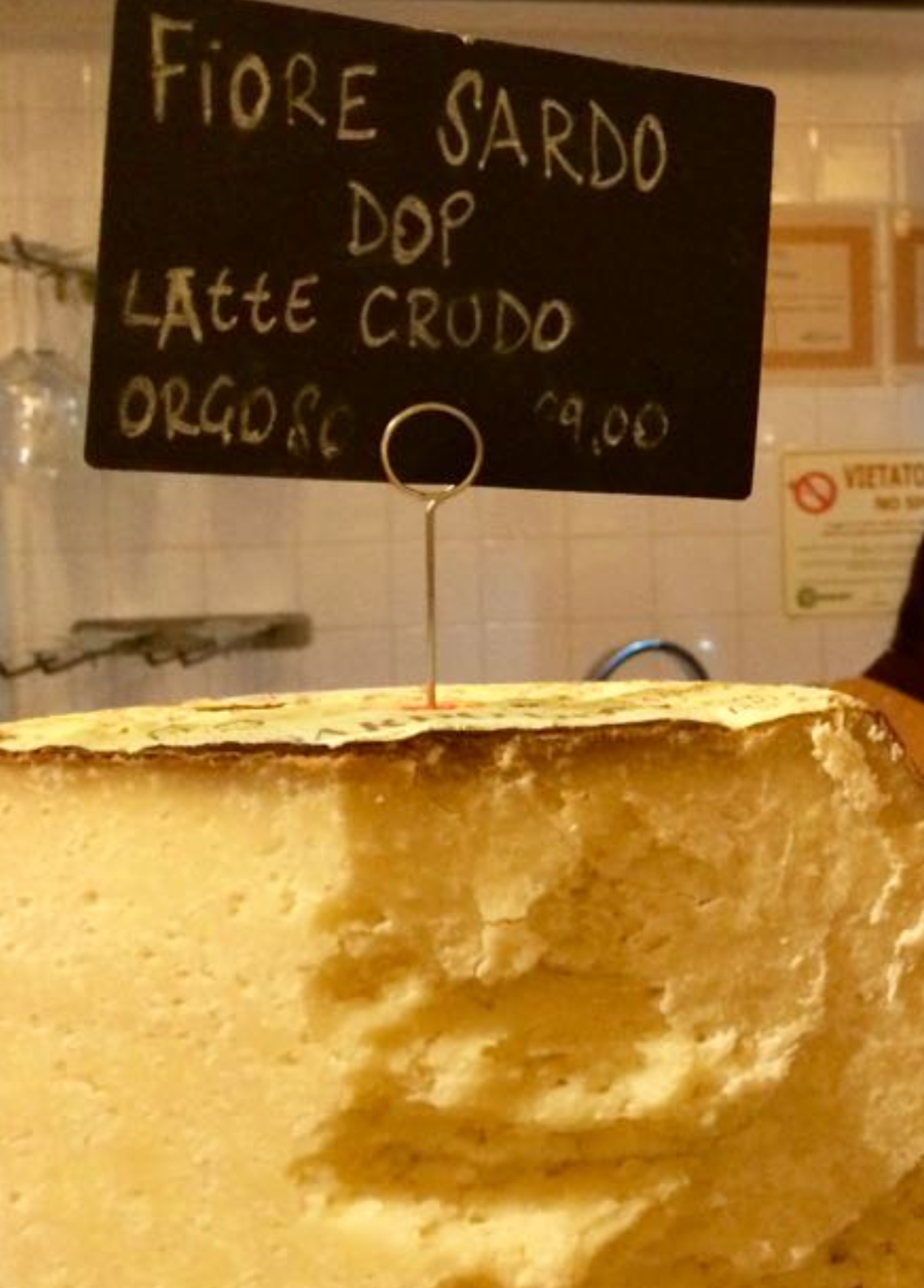
Distinctly Sardinian, fiore sardo is another type of pecorino cheese that isn’t so commonly found off the island. Personally, I wasn’t as keen on this version. It was so strong that it left a small tingle on my tongue. Nice enough to try but I certainly wasn’t craving for more.
Sardinian cured meats
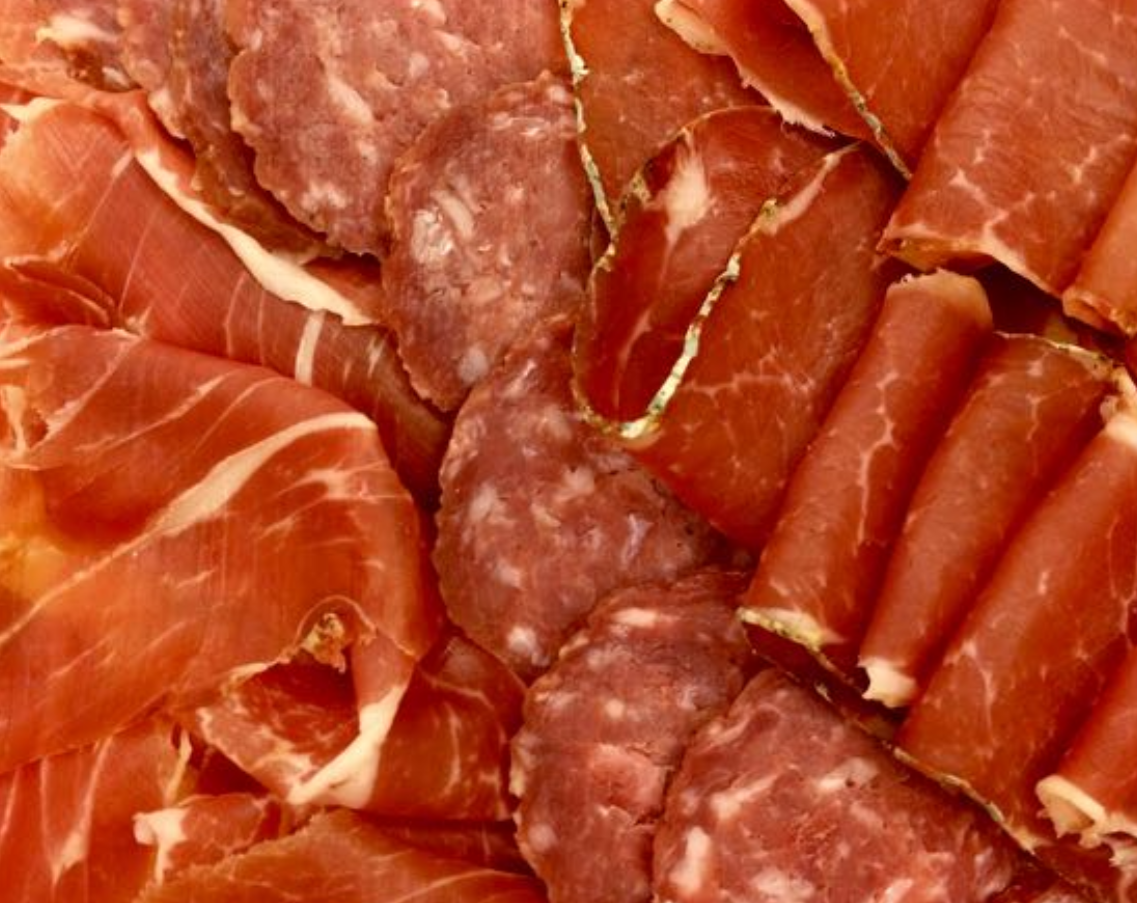
I’d be checking my pulse if cured meat didn’t show up on the table during an Italian meal and Sardinia didn’t let me down. Thanks to the extensive cattle and livestock that grazes the interior of the island, most of the hams and salamis that were served were locally produced and tasted all the better for it.
Malloreddus alla Campidanese
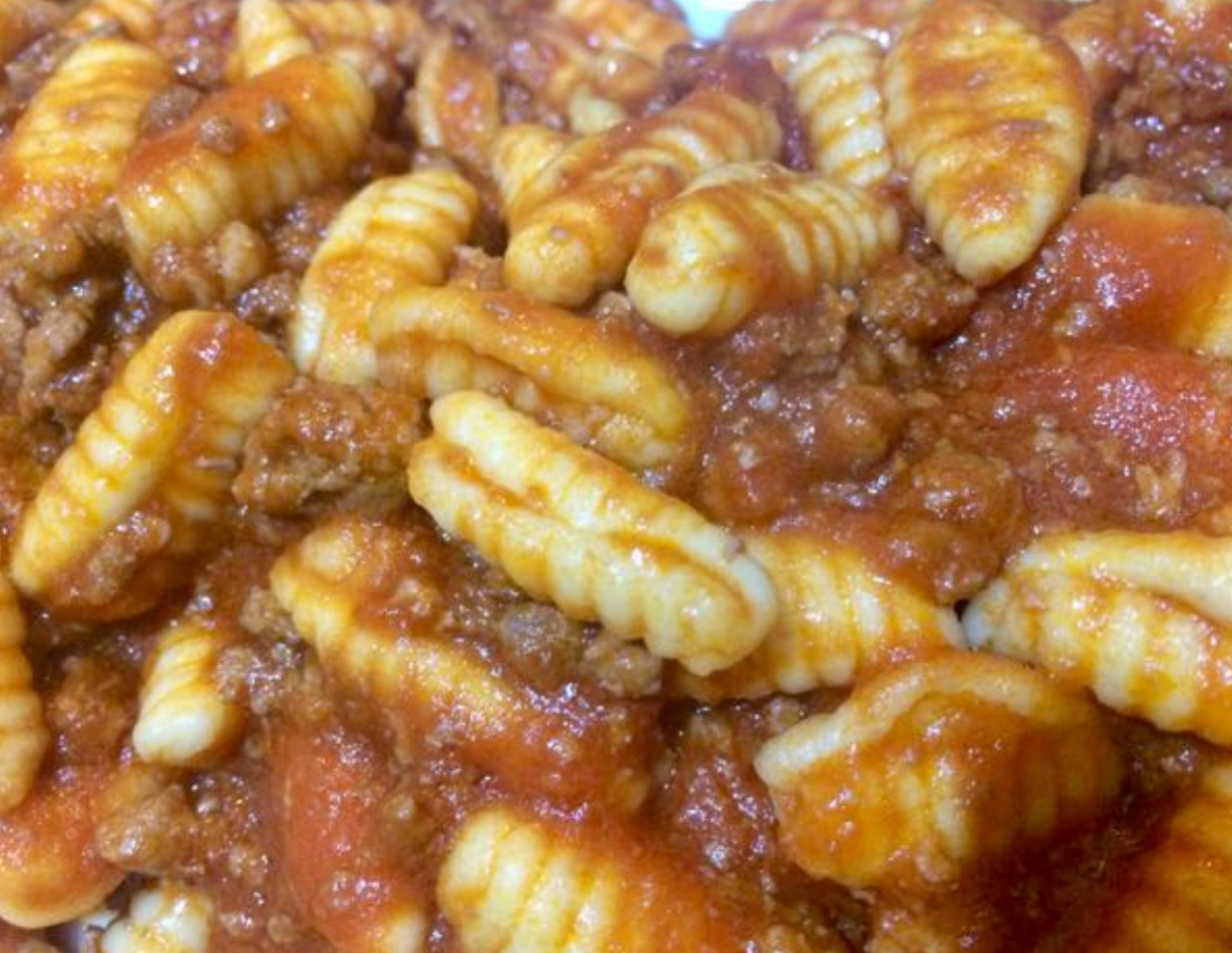
Don’t worry malloreddus alla campidanese merely looks like a plate of bugs or worms – it’s actually a kind of pasta that’s native to Sardinia and tastes damn fine. Most commonly served in a tomato sauce with sausage, the secret ingredient (saffron) gives this dish an elegant lift.
Culurgiones
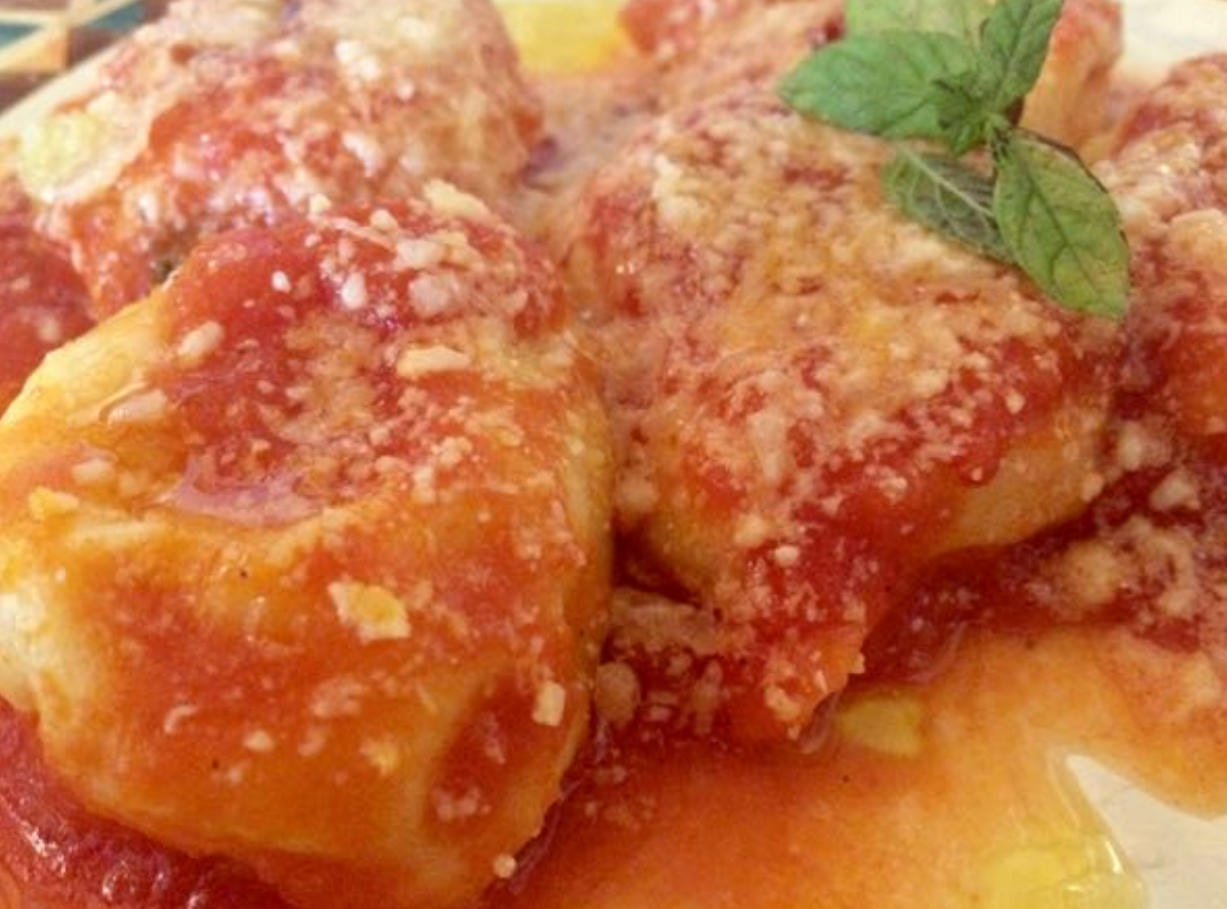 I’ve just eaten lunch and I’m feeling perfectly full. Still, if you put a plate of this down in front of me, I’d somehow manage to find room. I’d have to. This was one of my favourite dishes in Sardinia and one I’ll definitely be trying to make this at home. What is it?…The simple explanation is Sardinan ravioli but the real treat is found inside: a stodgy yet moreish blend of potatoes and pecorino. Again, a simple tomato sauce is all that’s needed to finish this dish.
I’ve just eaten lunch and I’m feeling perfectly full. Still, if you put a plate of this down in front of me, I’d somehow manage to find room. I’d have to. This was one of my favourite dishes in Sardinia and one I’ll definitely be trying to make this at home. What is it?…The simple explanation is Sardinan ravioli but the real treat is found inside: a stodgy yet moreish blend of potatoes and pecorino. Again, a simple tomato sauce is all that’s needed to finish this dish.
Fregola
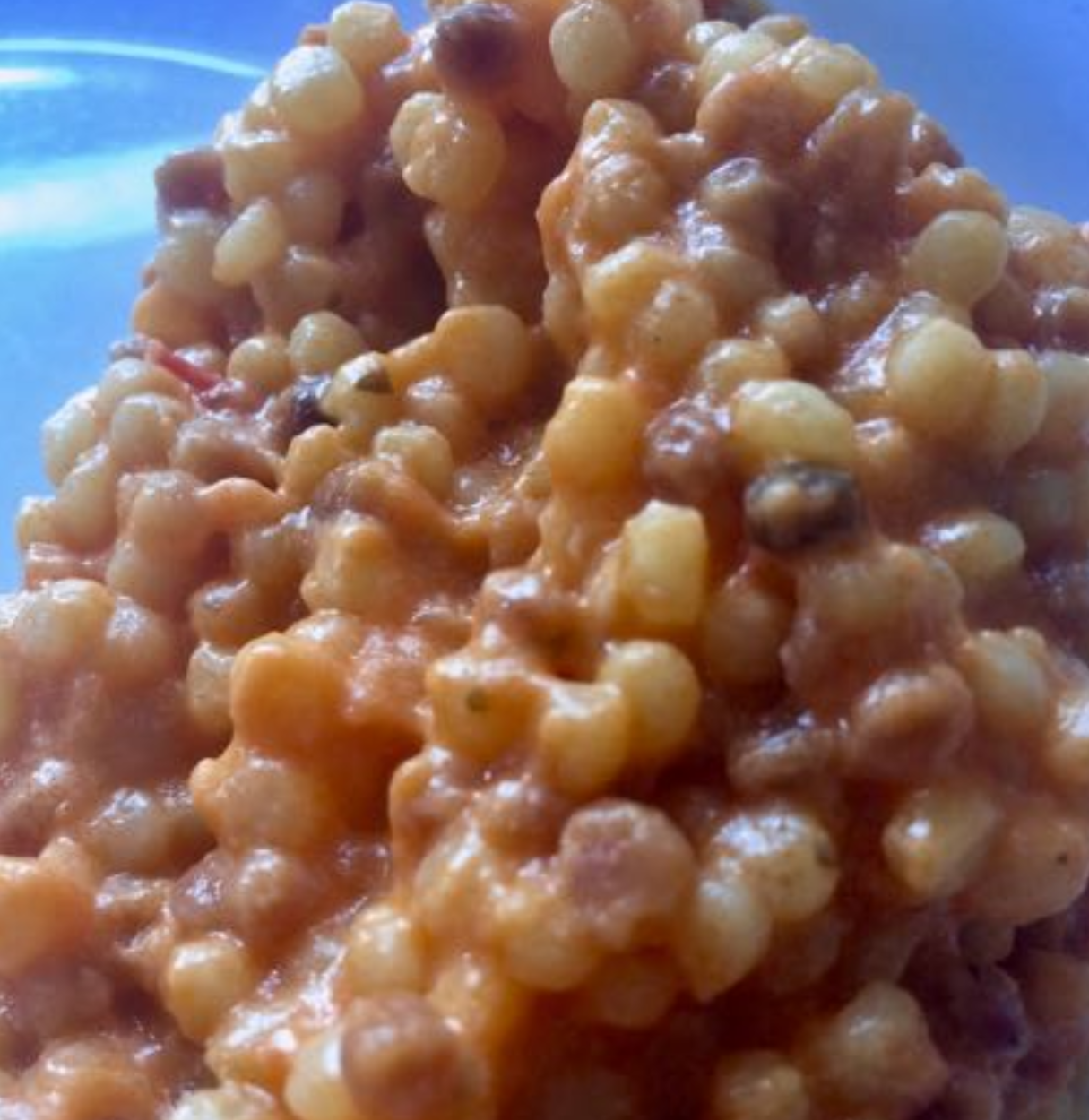 Tiny pearls of pasta, some people liken fregola to cous cous, but it’s got a much softer texture and consistency – more akin to rice in my view. Often served with seafood, I tried it cooked in a basic tomato sauce with fresh pecorino. It may sound dull but if you’re familiar with the fresh quality of Italian tomatoes and local cheese, you’ll know that is was anything but.
Tiny pearls of pasta, some people liken fregola to cous cous, but it’s got a much softer texture and consistency – more akin to rice in my view. Often served with seafood, I tried it cooked in a basic tomato sauce with fresh pecorino. It may sound dull but if you’re familiar with the fresh quality of Italian tomatoes and local cheese, you’ll know that is was anything but.
Fish and Seafood
Fish and seafood were my first thoughts when I knew I was travelling to Sardinia and I wasn’t disappointed. Best eaten near the coast, it was nice to have a contrast to the meat I’d eaten during my journey through Sardinia’s hilltop towns.
Seafood
Mussels are popular in Sardinia and are commonly served with fregola. However, I tried them on their own. Bright orange, juicy (but not too squishy), the drizzle of olive oil added a new flavour combination I’d not tried before; and I’m pleased to say it’s one I will be trying again.
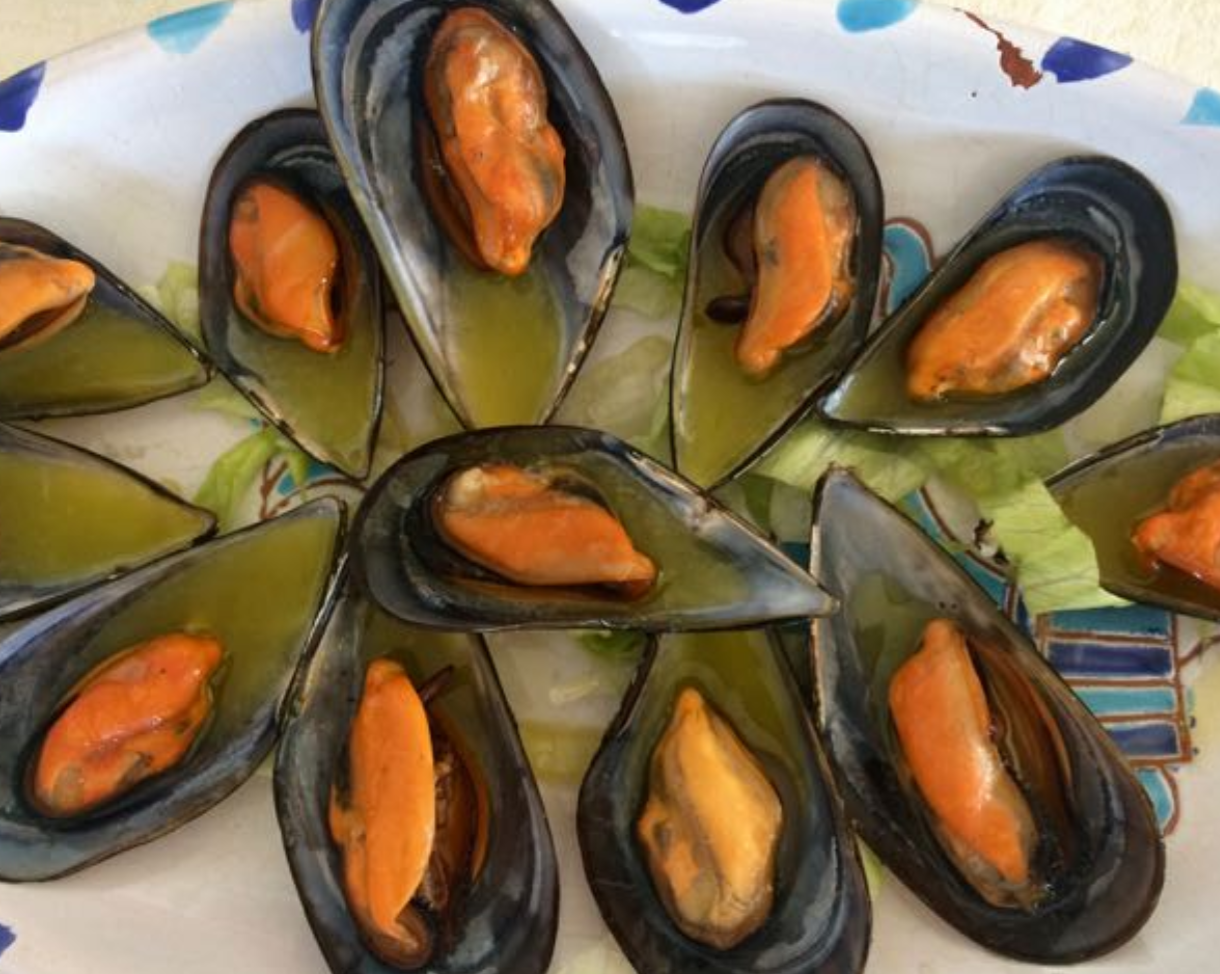
Mussels, mussels everywhere – and in this tomato based soup, it was possible to pick up the seafood flavour without losing the taste of the soup. It was served with a curled and fried piece of pane carasau: a nice touch.
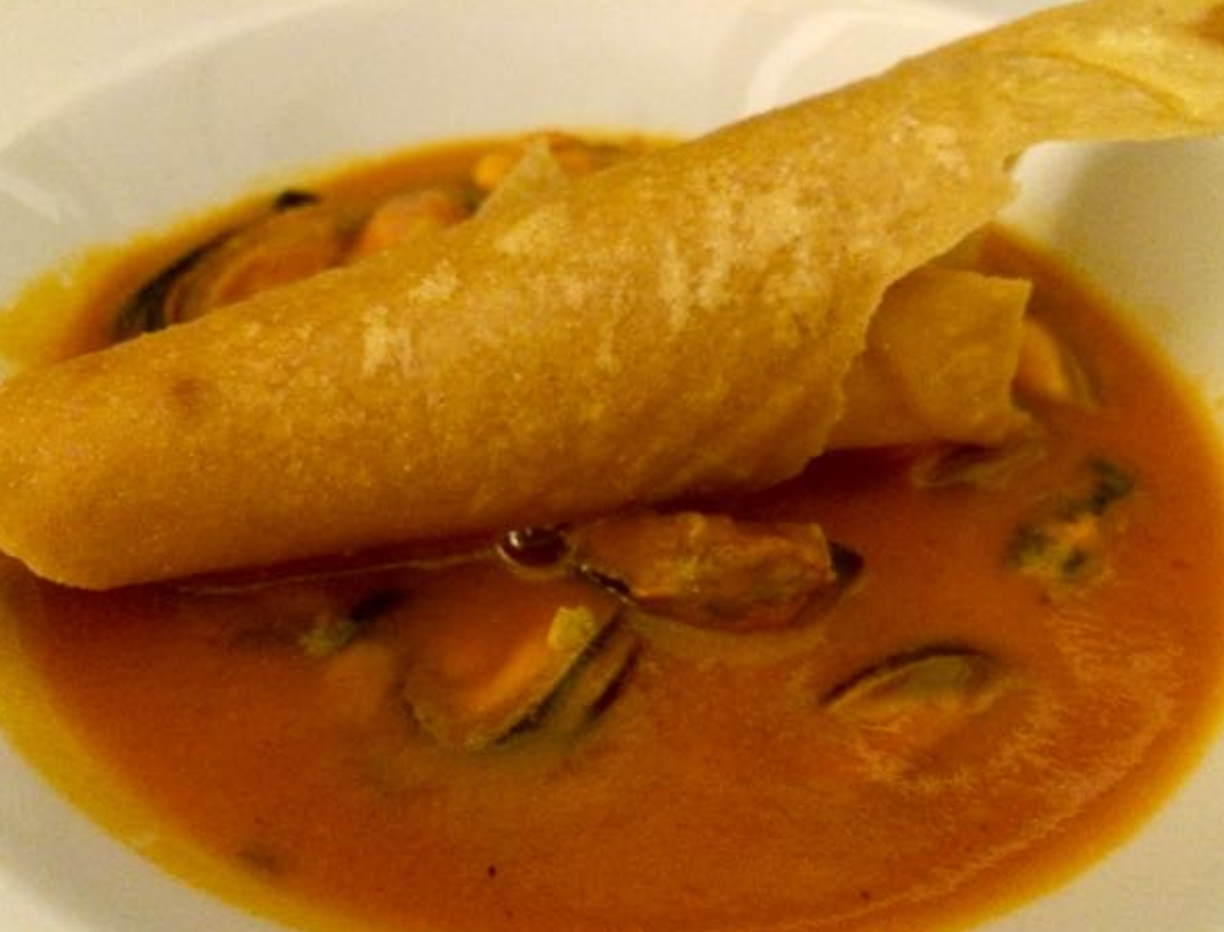
Squid antipasti with artichoke was almost predictable, and a bit disappointing from my point of view. Not that it was badly done, just that I’m not a fan of antipasti in vinaigrette – whether it’s squid, peppers, or anything else. If you do like that sharp flavour, dig in.
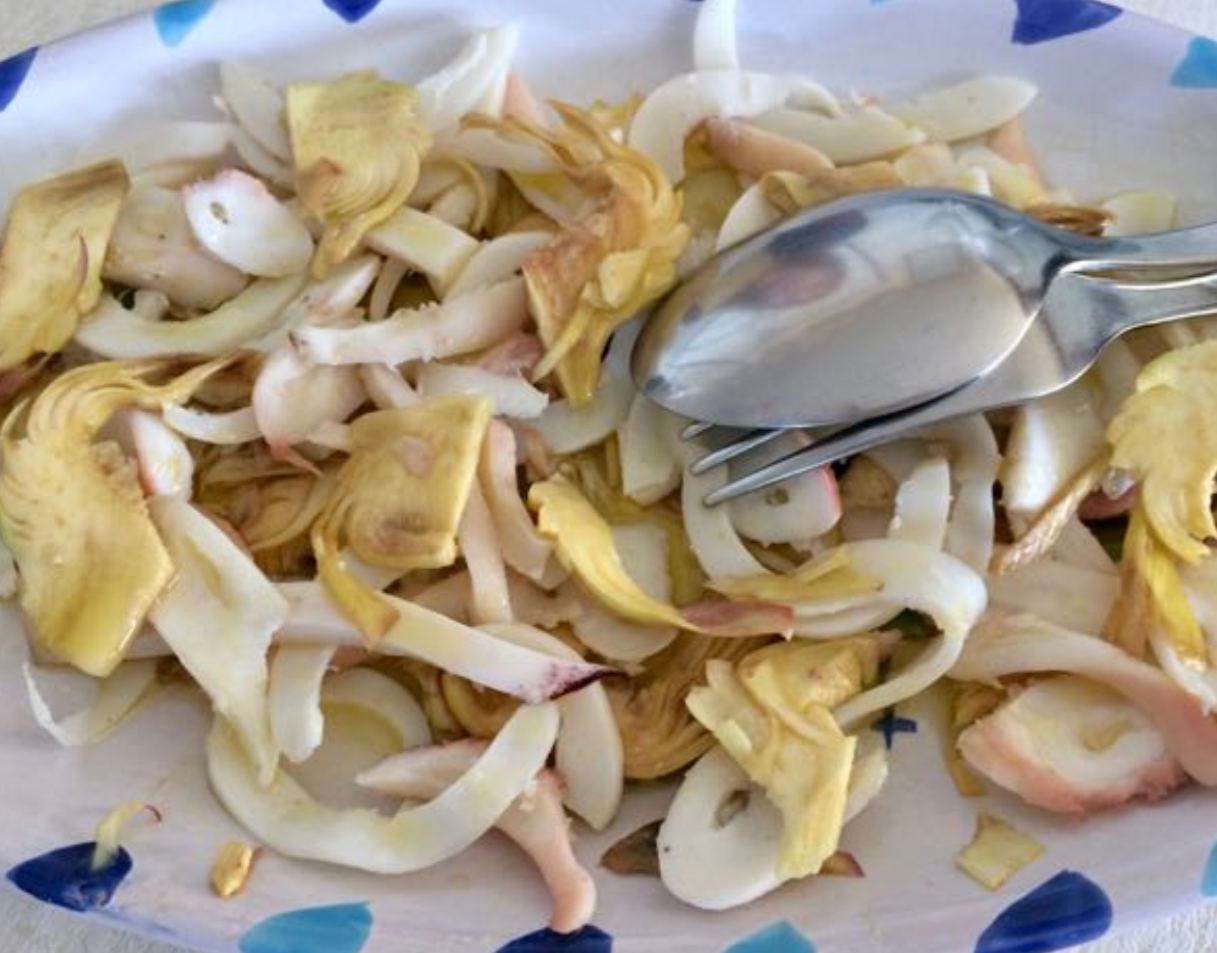
Whitebait I’ve never liked these tiny fish complete with heads, tails and innards. I tried one, I did, and still it was a no. But, if you like whitebait, you’ll find it on the antipasto menu in Sardinia.
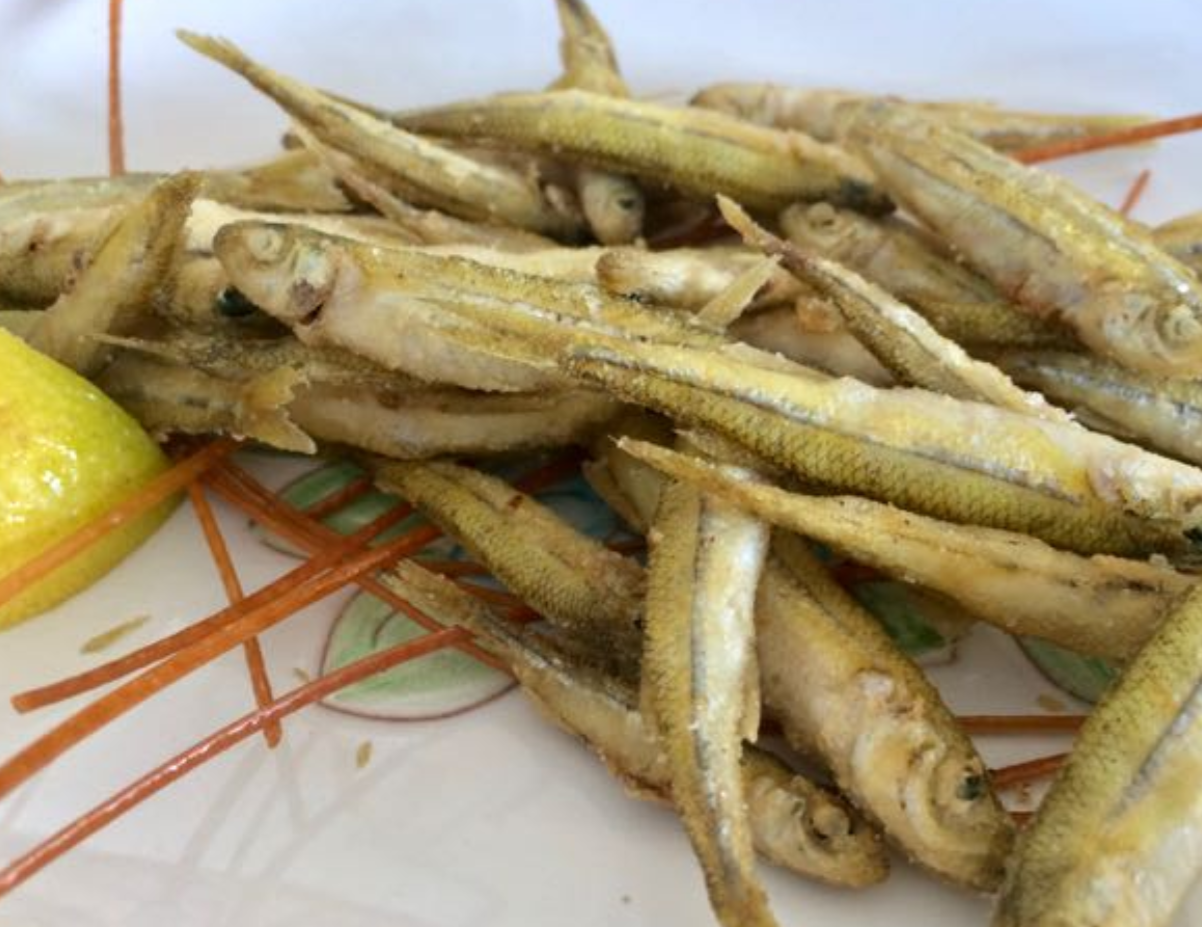
Ever since I got oyster poisoning a couple of years ago, I’ve not been willing or able to eat oysters but they smelt fresh, looked great and were popular with the other diners.
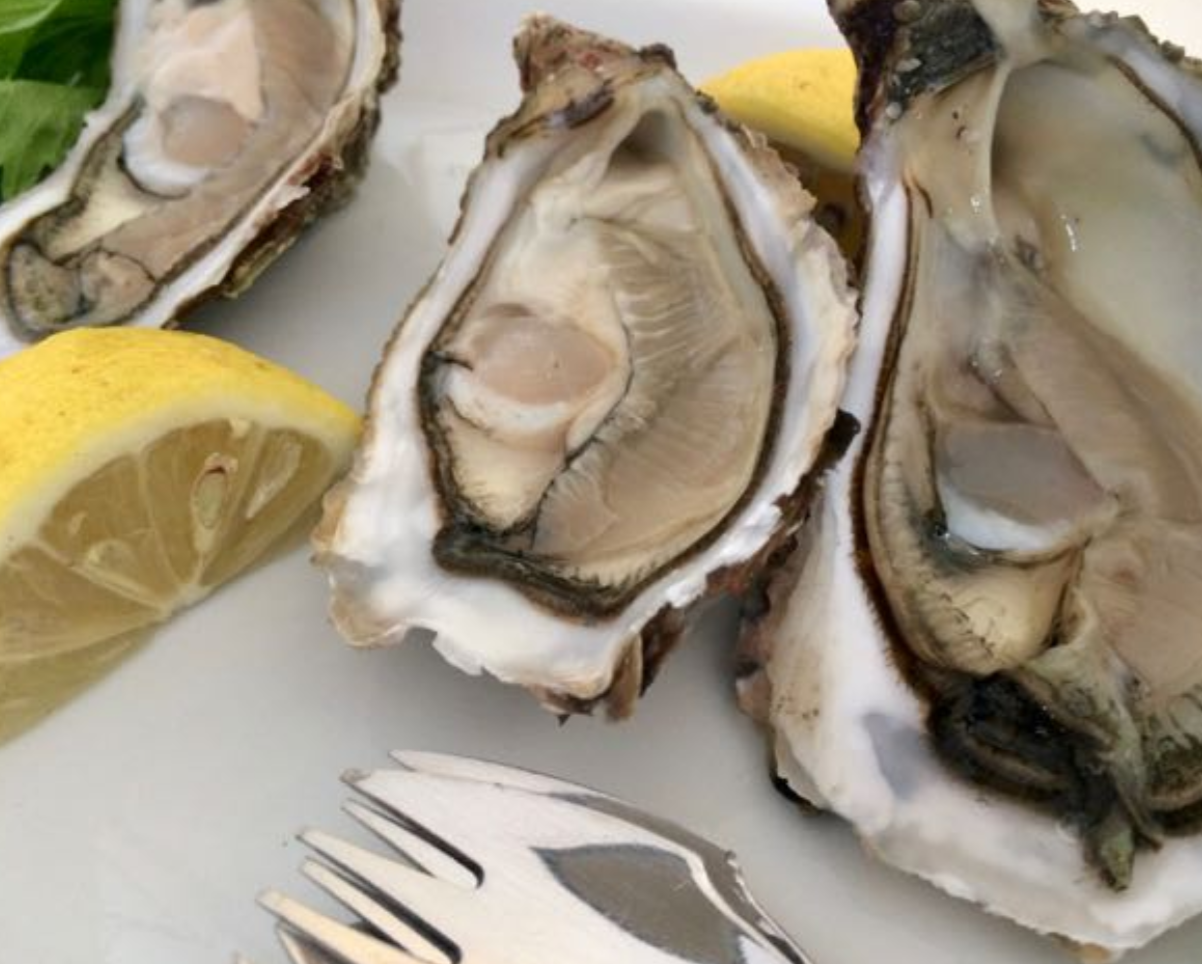
Porcheddu
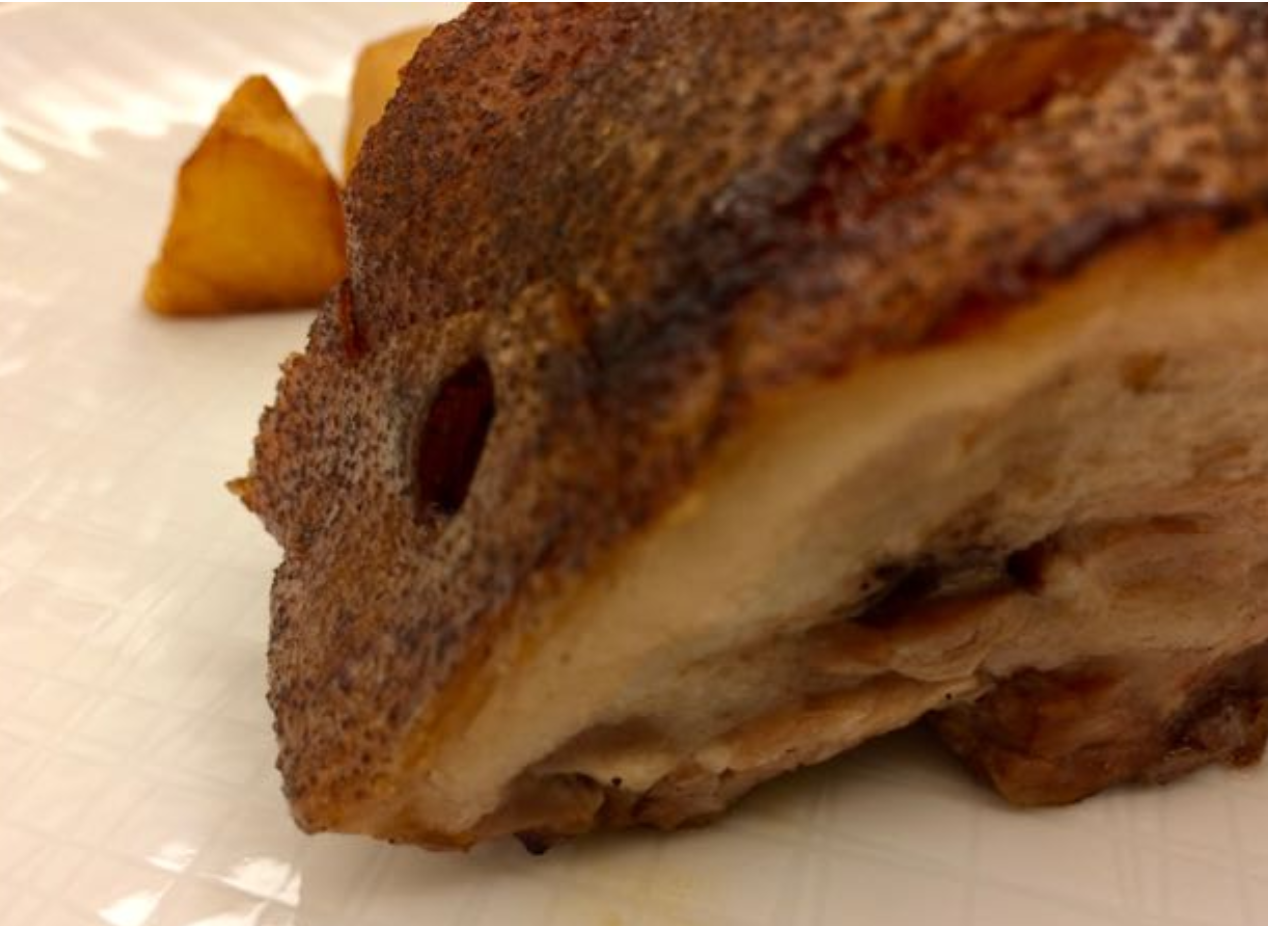
Porcheddu – sucking pig that is only one month old – is perhaps the most famous of all Sardinian foods. I did have a tiny pang of guilt when this arrived at the table but the delicate scent of roasted pork eventually lured me in. Tender with a very thick rind, I preferred the meat and the crackling to the rich, fatty layer, which was a bit too flabby for me. It was interesting to try, tasty to eat, but I won’t be scouring my homeland to get my hands on anything similar.
Desserts and sweets
Sebadas
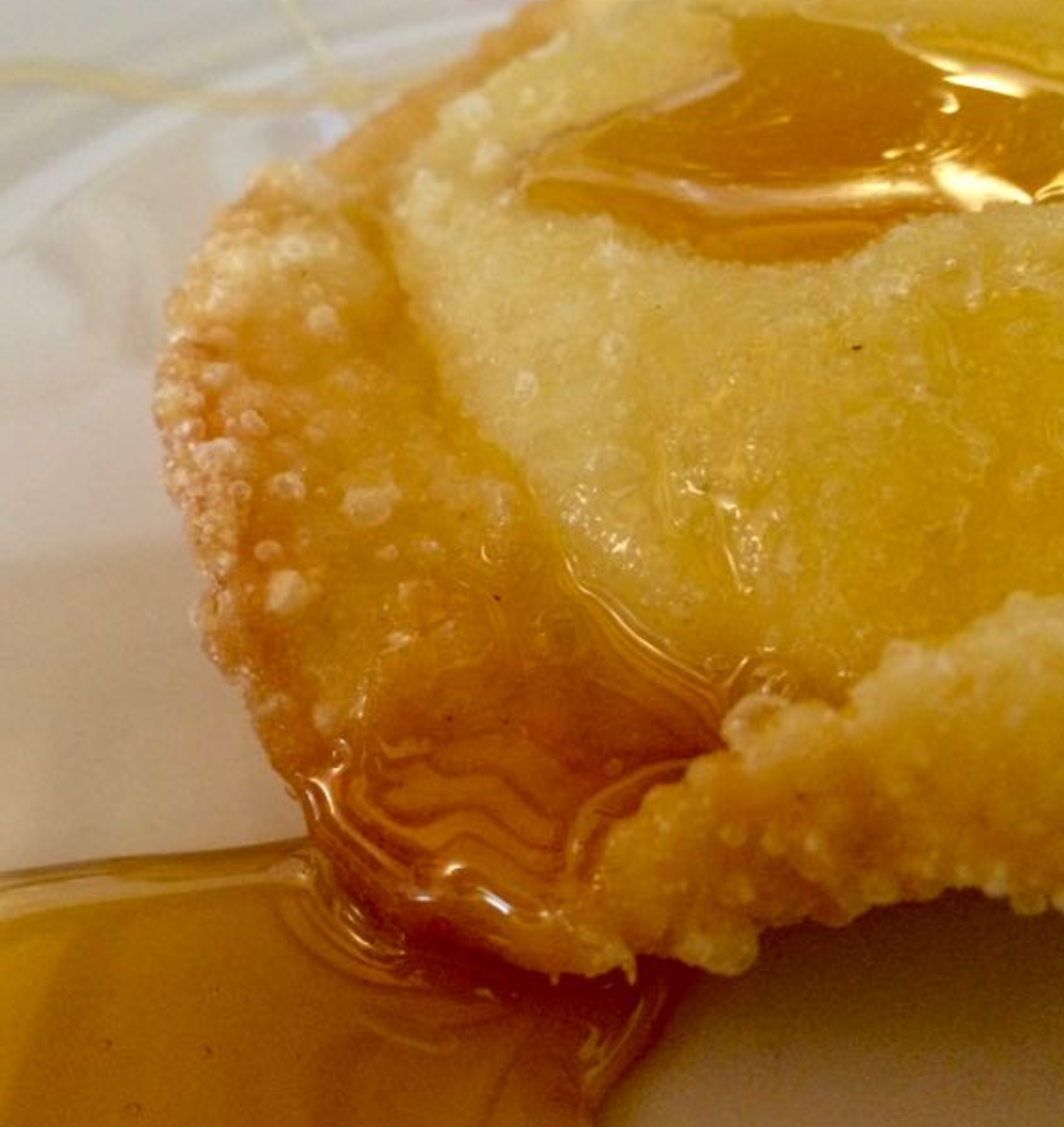
If I said pecorino cheese fritter bathed in local Abbamele honey, I’d understand if you didn’t get too excited by the sound of sebadas. However, you need to trust me – this combination absolutely works.
Sardinian sweets
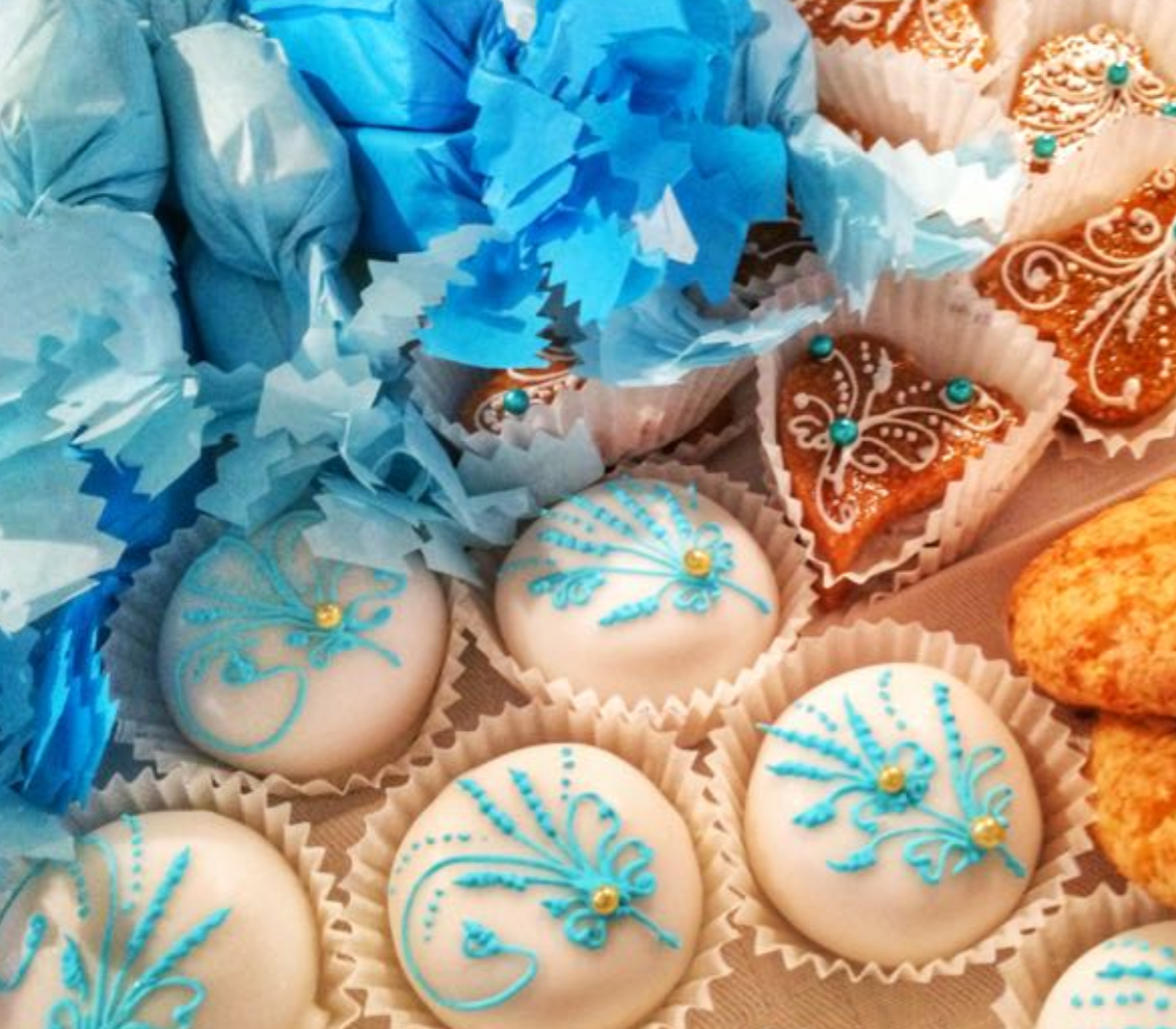 Sardinia is also well known for its sugary and almond flavoured sweets from amarettus (the brown biscuits on the right of the picture above) to papassini (the iced biscuits in the picture below) to maringa (the meringues in the bottom picture).
Sardinia is also well known for its sugary and almond flavoured sweets from amarettus (the brown biscuits on the right of the picture above) to papassini (the iced biscuits in the picture below) to maringa (the meringues in the bottom picture).
CHEFS
Michelin Starred Restaurants in Sardinia:
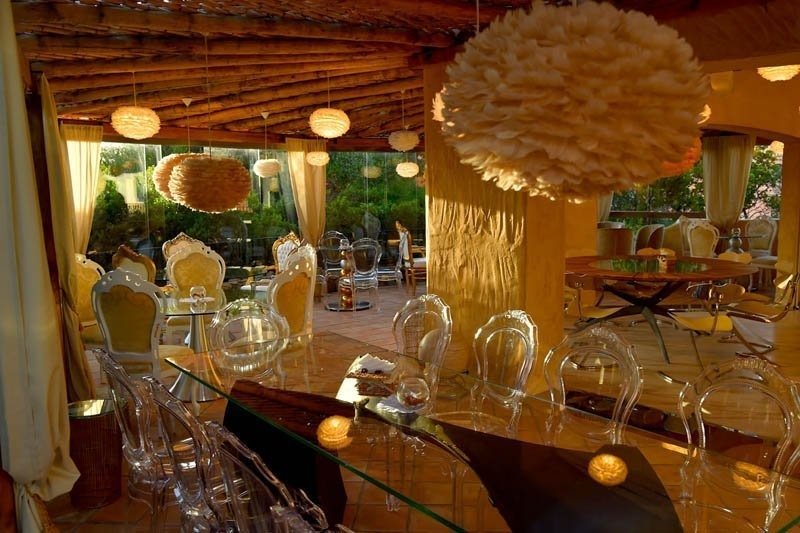 According to the Michelin Guide 2019,in Sardinia there are 3 Starred restaurants: the Chef Roberto Petza confirmed the Star for his restaurant “S’Appusentu” located in Siddi for the seventh year in a row, Chef Stefano Deidda also conquered 1 Star for his restaurant “Dal Corsaro” situated in Cagliari, finally Chef Italo Bassi conquered the first Star for his restaurant “Confusion Lounge” in Porto Cervo, Costa Smeralda :
According to the Michelin Guide 2019,in Sardinia there are 3 Starred restaurants: the Chef Roberto Petza confirmed the Star for his restaurant “S’Appusentu” located in Siddi for the seventh year in a row, Chef Stefano Deidda also conquered 1 Star for his restaurant “Dal Corsaro” situated in Cagliari, finally Chef Italo Bassi conquered the first Star for his restaurant “Confusion Lounge” in Porto Cervo, Costa Smeralda :
S’Appusentu, in vico Cagliari 3 in Siddi (South Sardinia, modern cuisine, prices: from 45 € to 92 €);
Dal Corsaro,in viale Regina Margherita 28, in Cagliari (South Sardinia, modern cuisine, prices from 85 € to 105 €);
Confusion Lounge, in via Aga Khan 1, on the Promenade du Port of Porto Cervo (Costa Smeralda, North East Sardinia, Modern cuisine, prices from 65 € to 200 €)
Local quality Food is the Secret of awarded Chefs in Sardinia:
Chef Italo Bassi received the fourth Star of his career, the first one was after he moved from Tuscany to Sardinian and started dedicating himself to the enchancement of Sardinian quality food. All the awarded Sardinian chefs share this aspect, particulary Chef Petza dedicated his life to rediscover Sardinia’s historical dishes giving them a contemporary touch and still using local products like those cultivated in his vegetable garden or by small and very small producers nearby.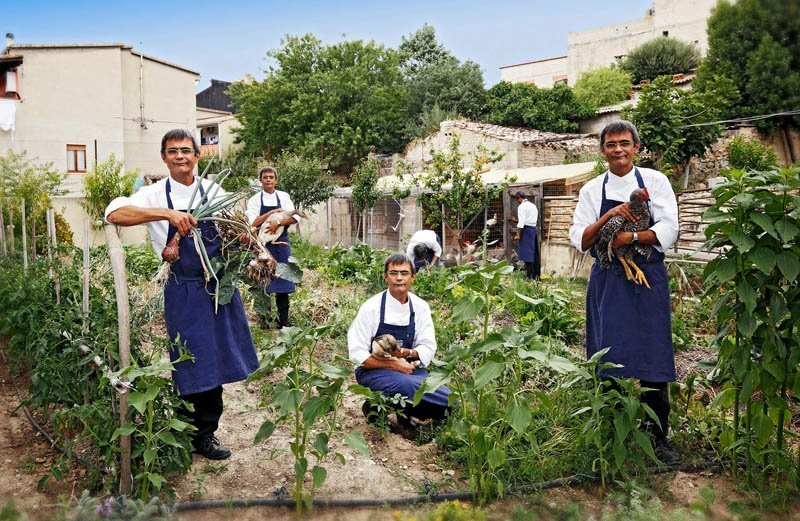
Bib Gourmand Restaurants in Sardinia in 2019:
In Sardinia we have 3 Bib Gourmand restaurants as well. What’s a Bib Gourmand restaurant? It’s a restaurant awarded by Michelin Guide for the excellent relationship between quality of the food and price.
They all 3 reconfirmed their positions:
Sa Corte, in Oliena (in the heart if Sardinia),
Su Gologone, in Oliena (in the Center of Sardinia),
Su Carduleu , in Abbasanta (in the Center of Sardinia)
